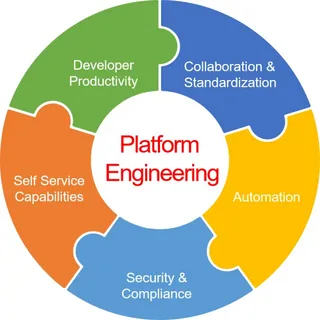Think of a modern city. Roads, bridges, power lines, and water systems form an invisible backbone, quietly supporting millions of daily activities. Residents don’t marvel at the pipes or cables beneath the ground, but without them, life would collapse into chaos. In the digital world, platform engineering serves a similar role. It constructs the unseen infrastructure that empowers developers to move swiftly, safely, and creatively. By building an internal developer platform (IDP), organisations provide their teams with the necessary highways and utilities to accelerate DevOps practices, ensuring innovation flows smoothly.
The Foundation Beneath Innovation
Developers often face fragmented tools and inconsistent workflows, like trying to navigate a city with half-built roads and missing street signs. Every project becomes a detour, slowing progress and causing unnecessary friction. Platform engineering fixes this by offering a paved, reliable route. An IDP integrates source control, CI/CD pipelines, monitoring, and security guardrails into a coherent system that developers can access with minimal effort.
This shift doesn’t just save time; it frees mental energy. Instead of wasting hours stitching tools together, teams focus on writing features and solving problems. Learners in a DevOps Course in Chennai often encounter this philosophy early, realising that efficiency is not about cutting corners but about building strong foundations that carry the weight of complex projects.
Empowering Developers Through Self-Service
Imagine entering a library where every book is locked behind a counter, requiring a clerk’s approval before you can open it. Frustrating. That’s how developers feel when they must raise tickets and wait days for infrastructure access. An IDP flips the script by turning the library into a self-service model: every shelf is accessible, and every resource is at your fingertips.
Self-service portals let developers spin up environments, deploy services, or configure resources without relying on operations teams. Guardrails are embedded so mistakes are minimised, but autonomy is maximised. This balance of freedom and control embodies the culture of DevOps at scale. As students of a DevOps Course in Chennai discover, empowering developers isn’t about removing guardrails; it’s about placing them in the right spots so creativity flows without jeopardising stability.
Observability: The City’s Traffic Lights
A city thrives when traffic moves smoothly, guided by signals and monitored through cameras. Without them, intersections become chaotic. In the same way, observability tools act as the traffic lights of an internal developer platform. Metrics, logs, and traces give teams real-time insights into the health of systems, highlighting bottlenecks before they cause gridlock.
By weaving observability directly into the platform, engineers eliminate the guesswork from troubleshooting. Developers no longer spend nights piecing together clues from scattered dashboards. Instead, they drive confidently, supported by a system that warns them of hazards ahead. This culture of visibility transforms firefighting into foresight, helping organisations maintain speed without losing safety.
Security as the City’s Walls and Gates
Every thriving city also needs security—walls, gates, and vigilant guards. Without them, the infrastructure is vulnerable to intruders. Similarly, security baked into an IDP ensures that every deployment respects compliance, authentication, and encryption requirements. Rather than leaving developers to fend for themselves, security becomes a built-in layer of the platform.
Automated scans, secret management systems, and policy enforcement work in the background, allowing innovation without leaving doors unlocked. This invisible armour ensures that speed doesn’t compromise safety. When combined with platform engineering, security becomes less of a hurdle and more of a companion, walking alongside developers as they build.
Collaboration: The City Square
Finally, consider the city square—a gathering place where people meet, share ideas, and collaborate. An internal developer platform fosters the same spirit. By uniting development, operations, and security teams within a shared ecosystem, silos dissolve. Everyone speaks the same language because they operate on the same foundation.
This harmony reduces friction, accelerates releases, and encourages innovation. Teams no longer argue over who owns which piece of infrastructure; instead, they co-create value. Collaboration transforms from a theoretical principle into a lived experience, strengthening the organisation’s culture as much as its codebase.
Conclusion
Platform engineering is the hidden architecture that empowers developers to innovate at scale. By building an internal developer platform, organisations provide reliable roads, empowering self-service, real-time observability, integrated security, and seamless collaboration. The result is not only faster delivery but also happier, more creative teams.
Just as a city flourishes when its infrastructure is thoughtfully designed, businesses thrive when their digital foundations are robust and resilient. For professionals and learners alike, mastering platform engineering isn’t just about learning tools—it’s about adopting a mindset that balances autonomy, safety, and speed. In the evolving landscape of technology, those who understand how to construct and nurture these platforms will be the architects of tomorrow’s digital cities.
